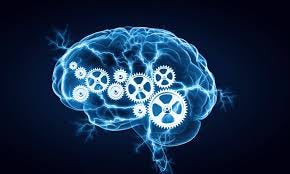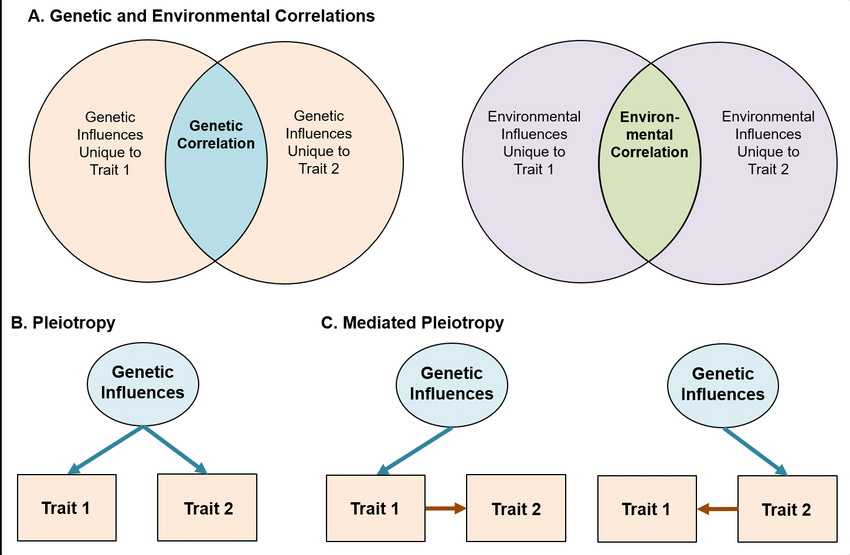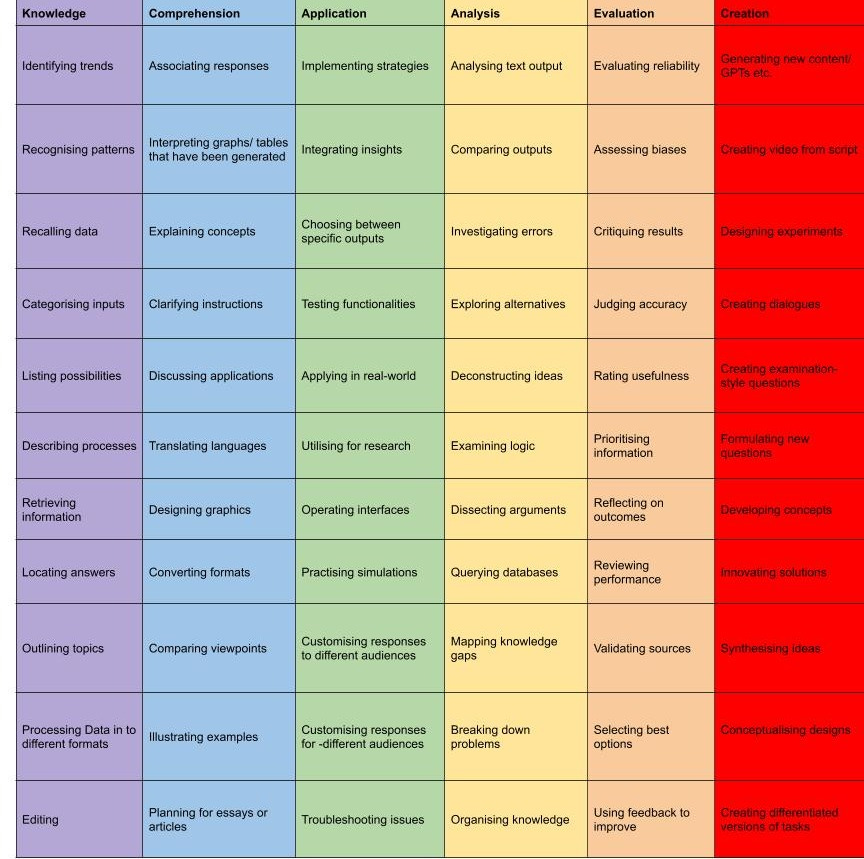From Brainiacs to Bytes: Unravelling the Mystery of Intelligence
Once upon a time in the enchanted land of academia, scholars thought they had cracked the code of human intellect. Theories like VAK (Visual, Auditory, Kinesthetic) learning styles danced through the academic halls, spreading joy and confusion in equal measure. Alas, these once-celebrated theories have since fallen out of favour, debunked and relegated to education myth status, leaving us scratching our heads and asking, "What exactly is intelligence?"
The Rise and Fall of VAK
VAK learning styles swept through the educational world like a viral cat video in the early 1980s. The premise was simple: some students learn best by seeing (Visual), others by hearing (Auditory), and still others by doing (kinaesthetic). It was a revolutionary idea that had teachers across the globe reassessing their lesson plans. Classrooms became kaleidoscopes of colourful posters, catchy jingles, and hands-on activities. It was a beautiful time, albeit a bit chaotic.
However, as the initial excitement waned, researchers began to scrutinise these theories with a critical eye. Studies failed to find empirical support for the idea that teaching to specific intelligences or learning styles improved educational outcomes (Pashler et al., 2008). The glitter of VAK began to tarnish, and educators were left in search of a new beacon of understanding.
Yet what VAK did, was to turn the classroom from being the teacher stood at the front lecturing, to changing the practice so that children became the focus of practice, not the curriculum. It lives on in Adaptive practice - where the teacher adapts the lesson for the learning needs of the students in there. That has been a revolution and is here to stay.
What is Intelligence?
Defining Intelligence
Intelligence has long been a slippery fish to catch. In his seminal work, "What is Intelligence?" Brody (1999) describes it as the capacity to reason, plan, solve problems, think abstractly, comprehend complex ideas, learn quickly, and learn from experience. This definition, while comprehensive, still leaves much room for interpretation and debate.
The IQ Conundrum
Enter the IQ test, the standardised measure of intelligence that has been both revered and reviled since its inception. The Stanford-Binet test, first developed in the early 20th century, has become synonymous with intellectual assessment. It evaluates five factors of cognitive ability: fluid reasoning, knowledge, quantitative reasoning, visual-spatial processing, and working memory.
Critics argue that these tests are culturally biased and fail to capture the full spectrum of human intelligence. The limitations of IQ tests include their inability to measure creativity, emotional intelligence, and practical problem-solving skills. Despite these shortcomings, scoring high on an IQ test remains a badge of honour, particularly for those who proudly flash their MENSA membership cards.
The CAT Conundrum
In the realm of educational assessment, the Cognitive Abilities Test (CAT) by GL Assessment is widely used in both international and national schools to gauge students' cognitive development. The CAT4 assesses verbal, non-verbal, quantitative, and spatial reasoning abilities, providing a comprehensive profile of students' cognitive strengths and weaknesses (GL Assessment, 2021).
Colleges, especially in India, also accept CAT scores for admission, adding another layer to the assessment landscape (TopRankers, 2023). However, similar to the IQ and Stanford-Binet tests, CAT scores are not without their problems. Critics argue that these tests, while useful, may not fully capture a student's potential or learning style. Moreover, they can be influenced by socio-economic factors, English Language acquisitionand test-taking skills, potentially disadvantageous to certain groups of students.
Figure 1: The general structure of an IQ test.
(McClure, 2022)
Genetics and Intelligence
Nature vs. Nurture
The age-old debate of nature versus nurture continues to play out in the realm of intelligence. Research has shown that genetics do play a significant role in determining intelligence, with heritability estimates ranging from 50% to 80% (Pfeifer & Scheier, 2001). However, environmental factors such as education, socioeconomic status, and even nutrition also exert a powerful influence.
Much like sporting ability, intelligence is not evenly distributed. Some individuals are born with small batteries, capable of powering only small lightbulbs, while others have the capacity for more. This disparity means that no matter how much effort is put in, the ceiling for potential can vary widely among individuals.
Figure 2: Genetic and environmental influences on intelligence.
(Wesseldijk, Mosing and Ullén, 2021)
The Role of Generative AI
In the digital age, a new player has entered the field: Generative AI. These advanced systems have the potential to revolutionise education by automating lower-order cognitive tasks, such as memorisation and basic comprehension, allowing students to focus on higher-order skills like analysis, evaluation, and creation. This shift aligns beautifully with Bloom's Taxonomy, from simple recall to complex creation.
Figure 3: Leveraging AI for Learning Using Bloom’s Taxonomy
(Holt, 2024)
The Wolfram Approach
Conrad Wolfram, in his book "The Maths Fix," champions the integration of computers into education. He argues that if computers can handle the heavy lifting of calculations and data processing, students can devote their mental energy to understanding concepts and solving real-world problems. Wolfram's four-step process involves:
Define the Question: Understand the problem you're trying to solve.
Translate the Problem: Convert it into a form that a computer can process.
Compute the Answer: Let the computer do the maths.
Interpret the Result: Make sense of the output and apply it to the original problem.
This approach not only makes learning more efficient but also mirrors the way professionals work in fields like engineering, data science, and economics.
It would seem obvious that we can apply this simple approach to Generative AI:
Define the Question: Understand the problem you're trying to solve.
Translate the Problem: Write your prompt giving instructions that the Generative AI can follow using all the parameters needed
Compute the Answer: Let the Generative AI do the heavy lifting.
Interpret the Result: Make sense of the output and apply it to the original problem.
What Does This Leave Us With?
Embracing a New Paradigm
With computers taking over the grunt work, the role of human intelligence shifts from computation to creativity. Students become problem-solvers, critical thinkers, and innovators. They learn to harness technology as a tool rather than a crutch, developing skills that are increasingly valuable in our rapidly changing world.
Final Thoughts: The Future of Intelligence
As we continue to explore the depths of human intellect, it's clear that intelligence is a multifaceted and dynamic construct. It's influenced by genetics, shaped by the environment, and now, enhanced by technology. The madcap theories of yesteryear may have faded, but they paved the way for a more nuanced and sophisticated understanding of what it means to be intelligent.
In the end, perhaps the greatest intelligence lies in our ability to adapt, to learn, and to continually seek out new knowledge, even as the landscape of learning evolves. So, let's raise a toast to the brainiacs, the bytes, and the boundless curiosity that drives us all forward.
References
Brody, N., 1999. What is intelligence?. International Review of Psychiatry, 11(1), pp.19-25.
GL Assessment, 2021. How CAT4 Helps Put All Your Learners Firmly on the Map. Available at: https://www.linkedin.com/pulse/how-cat4-helps-put-all-your-learners-firmly-map-gl-assessment/ [Accessed 16 July 2024].
Holt, S. (2024). Moving from Learning to Use AI to Using AI for Learning: Bloom's Taxonomy for Utilising Generative AI Tools. Retrieved from https://www.linkedin.com/pulse/moving-from-learning-use-ai-using-blooms-taxonomy-utilising-holt-duw8f/?trackingId=O1vkhuSNRHuNnFW4CWeEcA%3D%3D.
McClure, S. (2022) Intelligence, Complexity, and the Failed "Science" of IQ. [Online image] Medium. Available at: https://seanamcclure.medium.com/intelligence-complexity-and-the-failed-science-of-iq-4fb17ce3f12 (Accessed: 30 September 2024).
Pashler, H., McDaniel, M., Rohrer, D. and Bjork, R., 2008. Learning styles: Concepts and evidence. Psychological Science in the Public Interest, 9(3), pp.105-119.
Pfeifer, R. and Scheier, C., 2001. Understanding intelligence. MIT press.
TopRankers, 2023. Colleges Accepting CAT Scores. Available at: https://www.toprankers.com/cat-exam-colleges [Accessed 16 July 2024].
Wesseldijk, L.W., Mosing, M.A. and Ullén, F. (2021) 'Mental Health and Music Engagement: Review, Framework, and Guidelines for Future Studies', Figure 2, ResearchGate. Available at: https://www.researchgate.net/figure/Guide-for-interpretation-of-genetic-and-environmental-correlations-Variance-in-any-given_fig2_352108525 (Accessed: 1 October 2024).
Wolfram, C., 2020. The Maths Fix: An Education Blueprint for the AI Age. Wolfram Media.







